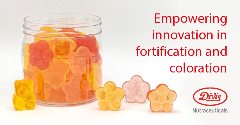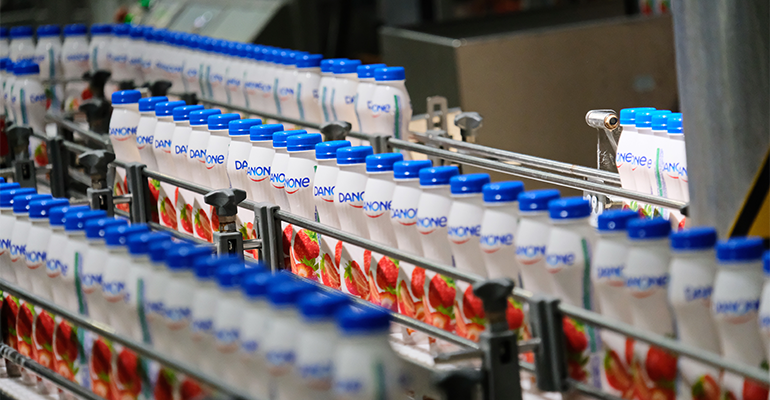News
Why the future of alternative protein is fermented fungi
16 Mar 2022
Fungi fermentation has stepped into the ring in a big way in recent years, and the number of companies that are looking to mycoprotein as a method to manufacture plant-based alternatives has proliferated.
Alternative protein options abound in today’s market. However, not all options are created equal, and one of the oldest methods of recreating a meat-like texture is resurfacing as a front-runner positioned to revolutionize plant-based protein. Not only is mycoprotein high in dietary fibre, low in fat and full of riboflavin, folate, phosphorus, zinc, choline and manganese, but it is also a highly versatile ingredient.

Major manufacturers rethink mycoprotein
Ingredients supplier Novozymes has recently pushed manufacturers to rethink their plant-based protein sources and consider fungi as a means to produce sustainable protein. In an open call last autumn, the company announced its a global platform “to cultivate new business collaborations that scale up the most promising innovations and ideas around how to use fungi as a source of protein.”
Similarly, Unilever announced a new partnership with the European food tech company Enough, which uses a zero-waste fermentation process to produce mycoprotein. Alternative protein startup The Better Meat Co. announced last year that it would open its own mycoprotein fermentation plant at the same time that it unveiled a line of mycoprotein meat analogue ingredients. US-based Meati also works with mycelium as a protein alternative, but unlike some of its competitors, the fermented fungi form the bulk of its products. Estonian alternative protein company Meet Future is using the ingredient to develop whole cut seafood analogues with limited ingredient lists.
“We want to rethink and advance protein to find innovative ways to help feed the world sustainably,” Amy Louise Byrick, executive vice president of strategy and business transformation at Novozymes said in a statement.
The use of fungi as a protein substitute is not a new idea. In 1985, British manufacturer Quorn became a pioneer in the space when it introduced fermented mycoprotein as a vegetarian meat solution and has quietly but successfully continued to produce its recipe over the years.
Fungi furnish environmental stability
The versatility of this fungi ingredient is not the only reason that mycoprotein is well-positioned in the market for future growth. Its production is also far less taxing on the environment. Producing Enough’s flagship mycelium product Abunda uses 97% less feed, 93% less water and 97% lower CO₂ emissions than beef, according to the company.
“Producing vast quantities of healthy and sustainable protein is one of the most urgent global priorities,” said Andrew Beasley, commercial director of Enough. According to the United Nations Climate and Clean Air Coalition report, human-caused methane emissions from agriculture now stand at 42% of total emissions.
Indeed, the United Nations says about two-thirds of food system emissions come from agriculture, land use and changes in land use. In the US, data from the Environmental Protection Agency (EPA) showed that agriculture accounted for 10% of the country’s overall greenhouse gas emissions in 2019.
The continued pressure on the environment from industrial agriculture has pushed consumers to demand more sustainable alternatives from companies, and manufacturers are responding. Research from Boston Consulting Group and Blue Horizon Corporation cited by Unilever indicate that Europe and North America will reach “peak meat” by 2025. Following that benchmark, the consumption of conventional meat will fall and there will be “realistic alternatives” for nine out of ten of the world’s favourite dishes. In conjunction with this evolution, the global meat-free sector is expected to hit $290 billion (€264.8 billion) in 2035.
Related news

Oat Barista: Innovation for game-changing beverages
20 Nov 2025
Oat Barista is a clean label, sustainable, and innovative drink base specifically designed to create the perfect foam in one single ingredient.
Read more
Nitrites: Pressure grows on UK to follow EU’s lead
20 Nov 2025
Pressure is growing on the UK to follow the EU’s lead after the bloc revised its regulations on the permitted levels of nitrites and nitrates in cured meats.
Read more
Empowering innovation in fortification and colouration
13 Nov 2025
Divi’s Nutraceuticals offers a large portfolio of innovative, high-quality ingredients for foods, beverages, and supplements, with bespoke solutions and expert support for product success.
Read more
Danone highlights digestive health as potential ‘tipping point’ for food industry
13 Nov 2025
Danone is betting on a food industry “tipping point” that will bloat the market for healthy products, particularly those related to gut health.
Read more
Standing Ovation and Bel scale up casein production from dairy co-products
11 Nov 2025
Foodtech company Standing Ovation has partnered with cheese specialist Bel Group to manufacture dairy serums for industrial-scale casein production via precision fermentation.
Read more
AI attraction means foodtech startups must ‘prove’ rather than ‘promise’
4 Nov 2025
Reports suggest that artificial intelligence (AI) is sucking investment from foodtech and agritech, but investors say the picture is complicated.
Read more
Will postbiotics become the go-to functional ingredient?
3 Nov 2025
Postbiotics show significant promise for the functional foods market due to their safety profile and beneficial bioactive properties, research suggests.
Read more
Meet the finalists of the Fi Europe Innovation Awards 2025
31 Oct 2025
Who made it to the shortlist of the Fi Europe Innovation Awards 2025? Read about the 23 companies making food and drink products healthier and manufacturing processes more efficient.
Read more
Penguin and Club bars no longer classed as chocolate
30 Oct 2025
Penguin and Club bars can no longer be classified as chocolate after the pladis-owned McVitie’s brands turned to cheaper alternatives amid the ongoing cocoa crisis.
Read more
Shorter drying time, sweeter success!
30 Oct 2025
Curious about cost-effective, sustainable and delicious candy making? Stefan Wessel reveals how Avebe’s solutions reduce drying time and energy use by up to 50%.
Read more